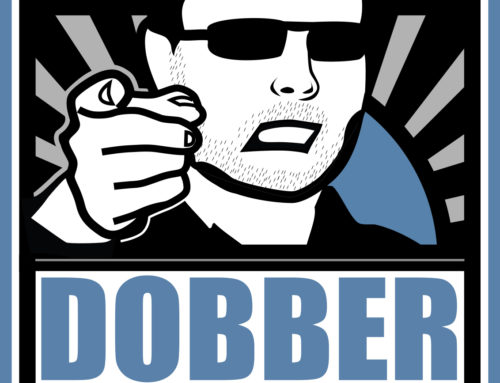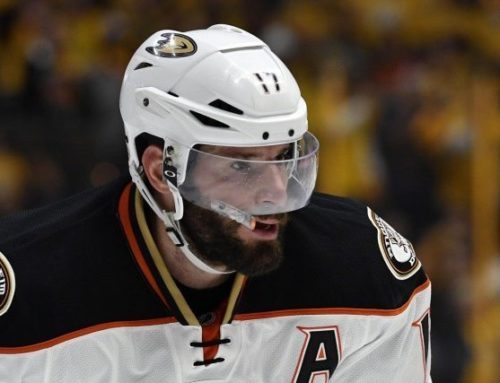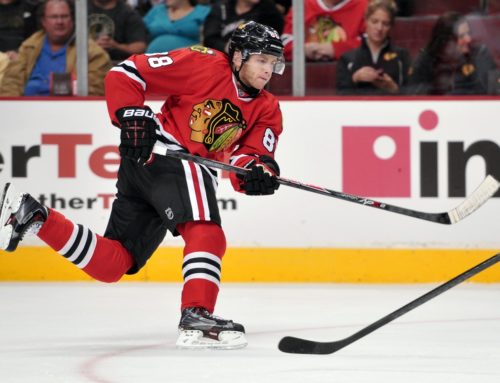Strategic Asset Management
Dobber Sports
2011-04-15

How do we build a winning team? Everyone knows the old adage of buy low, sell high but how exactly does that look over the course of a season? To answer the question well, we need to look at how poolies’ perceptions vary over the year.
It turns out that perceptions follow a very predictable pattern. Once we identify that pattern, it's much easier to position our teams to derive value from it. Taking advantage of this "perception cycle" is a very good way to accelerate a rebuild or just to make your keeper team stronger as the years go on.
In the end, this all comes back to supply and demand… specifically, positioning your teams to be selling certain commodities when they are in demand.
Each period of the year has its own particular characteristics, so let's look at them one by one.
April-June: Playoff madness
Every year there are players who step up above their normal production levels during the postseason. They raise their profile, and as a result can be overvalued. Fantasy hockey GMs use the line of thinking "He stepped up bigtime during the playoffs, so hopefully he'll carry that production into next year."
A few heroes from playoffs past are Ryan Malone (2007/08), Danny Briere (2009/10), Ville Leino (2009/2010), and Johan Franzen (2007/08 through 2009/10). None of them replicated their playoff scoring pace in the following regular season.
It's difficult to predict which players will surprise in the playoffs, but if you've got a good playoff player on your roster that you'd like to move, the best time of the year to do it is following a great playoff performance.
June: Prospect madness
The 2011 draft class will be reaching its peak of hype, so every GM and their dog will want to get first round prospect draft picks or the top 2011 prospects. Irrationally so. We all do it. Ideal trade bait for June are 1st round prospect picks or the 2011 draft class themselves. At the time of this writing, it's probably a little late to be acquiring these types of assets, but come late June it is definitely the time to sell.
July: Free agent madness
In July, fantasy hockey GMs take a look at which players have changed teams, and the interpretation is virtually universally “OMG Player X is now going to be lining up alongside Player Y! That’ll be good for his production!” Player X almost never lives up to that. A perfect example from last year would be Horton in Boston. This period starts a little before July 1 (once the draft is done) and continues until the start of the season.
A good way to approach this is to target players that will be going UFA during the season, with a view to moving them when the time is right.
August/September: Youth breakout madness
The end of summer or early September is not the time to be acquiring young players, because that's what everyone else is trying to do. As Jeff Angus constantly points out, it’s a faulty assumption that many GMs fall into to predict that young players will take a step forward each year simply because they are young and “therefore” improving.
Too many examples from past years to name… Kostitsyns, Little, etc, etc. When the hype starts to reach a fever pitch in early September (OMG there's a big breakout coming!!!! LOLZ!!1!!!1!!!), the time is right to SELL SELL SELL. How were GMs valuing Paajarvi last September? It was much higher than he showed this year and will likely show next year.
November: Fast start projection madness
A player that has dominated the first 5-6 weeks of the season is often unrealistically projected to maintain that pace for the entire 82 game schedule. Dig back through the forums if you like at valuations for Kopitar in late November 2009 or Stamkos in late November 2010. Both were perceived as stone cold locks for 100 points and GMs were paying through the nose for them.
It's very tough to predict which players will do this from year to year. It's probably even tougher to look yourself in the mirror and have the guts to flip them when the hype is going nuts and they’re just sitting there on your roster, but that’s the way to improve your team.
December/January: World Junior Hype Madness
Angus again is here. Not too much more to add to his thoughts.
February: Trade deadline madness
How many people were drooling over the prospect of Vokoun landing on a team like Washington leading up to this year’s trade deadline? This phenomenon happens every year. Even players that get moved rarely go on to produce huge numbers down the stretch, yet every year poolies fall into the same “Player X will get a big boost through a change of scenery!” mindset.
Tying it all Together
So what drives these changes in perceived value? The common thread is media coverage. As much as we’d like to think we’re dispassionate fantasy hockey pros, what’s in the media really does affect how we value players. Look at TSN’s (or any other network that covers hockey) programming through the year. They have a tried-and-true common formula:
- April-June: Playoff analysis – highlights of great playoff performers
- June: Draft previews – in-depth looks at "the next great players"
- Late June/July: Free agent previews – who is moving around and who will they play with?
- August/September: Season previews – breakouts, sleepers, etc
- November/December: Season-to-date recaps – profiles of players with fast starts
- Late December/January: World Juniors – again more of "the next wave"
- February: Trade deadline – who might move and who might they play with?
The trick to really improving your team is to anticipate these fairly predictable swings in perceived player value — and it’s typically the same “type” of player every year at the same time — by moving your assets strategically in advance of those particular periods before the mentality of other GMs has shifted accordingly.
If you've got a fairly competitive league, you have to be craftier about implementing this approach, but it works because most people are rather susceptible to these types of influences. The trick is to seek out value that goes against the grain of the of market – when GMs are disproportionally focused on prospects, the demand for prospects increases so you'll create more value on your team by moving prospects and targeting other types of players that will have a higher perceived value at a different time during the year. If you can stay ahead of the "perception curve" then you'll find that you can consistently build better teams by always having assets that are in demand.
A final note: there’s also no substitute for pick up “left for dead” players very cheaply in the summer before the season starts. Leading into 2010/2011, players like Brent Burns and Tim Thomas were available for pennies on the dollar because of injury issues and young talent nipping at their heels. Now their values are much higher. Then again, so were players like Andrei Kostitsyn…
www.hockeypoolgeek.com provides advanced fantasy hockey tools and analysis to give our members the right information to make better decisions in their leagues. If you’re serious about becoming a winner, become a subscriber.





 BUF
BUF N.J
N.J PHI
PHI MIN
MIN VAN
VAN FLA
FLA TOR
TOR CGY
CGY BOS
BOS